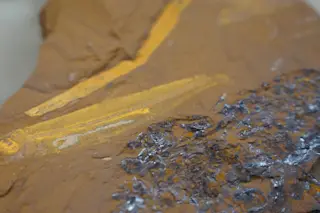A Linheraptor skull. (Courtesy Michael Pittman) In the vast emptiness of the Gobi Desert, the days are long and weary, and the searing sun does little to boost the spirit, even with the prospect of discovering new dinosaur species on the horizon. Exhaustion and sunstroke are a hard-working paleontologist’s enemies out there, and staying well-hydrated is of utmost importance. Thus, an enemy to the paleontologist’s productivity emerges: frequent “relief” breaks out in the wilderness. But sometimes a diversion from the task at hand leads down the road to discovery. During one such “relief” break in 2008, Michael Pittman and his international team of fossil hunters made the history books while prospecting in the region of Bayan Mandahu in Inner Mongolia, China. Pittman is the current head of the Vertebrate Paleontology Laboratory at the University of Hong Kong, and has spent years scouring the Gobi for fossils.
The rugged landscape of ...














